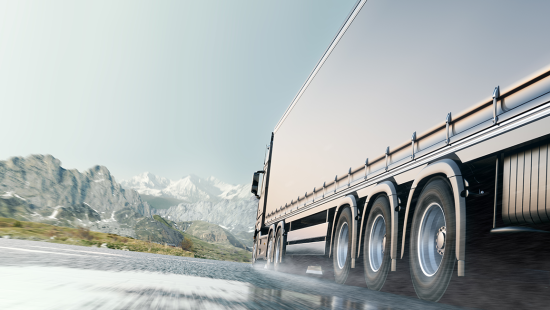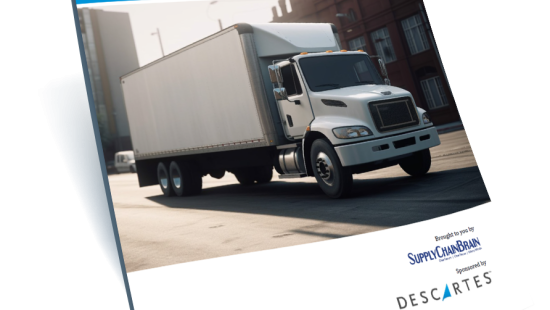How to Overcome Disruption in Your Foodservice Distribution Operations
The foodservice distribution industry is facing a perfect storm of operational pressure, rising costs, and changing customer expectations. As fleets work to deliver on time and in full, they are navigating an environment filled with both predictable and unexpected disruptions. The ability to manage these challenges has become a defining factor in performance, profitability, and customer loyalty.
Types of Disruptions in Foodservice Logistics
Disruptions in foodservice distribution can be grouped into two main categories: operational and environmental. Each creates ripple effects across the supply chain, impacting cost, timing, and service quality.
Operational Disruptions
These are internal issues that occur within the distributor’s control and often stem from process or resource issues:
- Mis-deliveries or missing products due to picking or loading errors.
- Incorrect orders reaching the wrong customer or location.
- Extended or shortened service times that throw off route schedules.
- Undeliverable docks or limited staffing at customer locations that delay unloading.
Each of these issues adds cost and complexity, often forcing dispatchers to reroute or reschedule deliveries, leading to inefficiency across the distribution network.
Environmental Disruptions
These are external factors that impact deliveries once the vehicle is on the road and are often outside a fleet’s control:
- Traffic congestion or vehicle accidents.
- Weather conditions that delay travel or restrict access.
- Road closures and construction that require detours or alternative routing.
Even small delays can accumulate quickly, creating schedule overruns that impact on-time performance and customer satisfaction.
Key Pain Points to Address in Foodservice Logistics
Beyond these disruptions, fleets face a set of broader, structural challenges that make day-to-day operations more difficult.
Tighter Delivery Windows
Restaurants and retailers are placing smaller, more frequent orders to reduce inventory holding costs, but they still expect precise and flexible delivery windows. Meeting these expectations requires more stops per route and faster adjustments to scheduling. As delivery complexity increases, fleets face shrinking margins and heightened pressure to deliver exceptional service despite limited resources.
Increased Order Variability
Fluctuating demand adds another layer of complexity. Seasonal trends, supply volatility and shifting consumer habits make it difficult for distributors to plan routes and inventory effectively. Distributors must adapt quickly to sudden changes while trying to keep trucks full and routes efficient.
Workforce Challenges and Tribal Knowledge Loss
High driver turnover and the loss of experienced routing staff often leave critical delivery details undocumented. Without a centralized system to capture and share this knowledge, operations depend too heavily on individuals rather than processes. This leads to inconsistent delivery execution, longer onboarding periods for new employees, and greater vulnerability when staffing changes occur.
Disconnected Systems and Limited Visibility
When routing, dispatch, telematics, and customer engagement tools operate separately, critical information is lost, limiting visibility and slowing response times. Disconnected systems prevent fleets from reacting quickly to disruptions or analyzing performance trends, while also increasing manual work for drivers and dispatchers. As a result, decisions that should be automated become delayed, reducing efficiency and hindering overall operational performance.
CUSTOMER SPOTLIGHT
US Foods Reduces Costs and Increases Case-per-Mile with Optimized Routing
Learn how US Foods improved fleet visibility and case-per-mile performance while managing 6,500+ daily routes with Descartes routing and telematics technology.
How Foodservice Fleets Can Overcome Operational Obstacles
Solving the complex challenges of food service logistics requires a combination of technology, process discipline, and communication. The key is to move from reactive problem solving to proactive management using data, planning, and automation.
1. Improve Customer Visibility
Providing customers with real-time order tracking, delivery windows, and pre-arrival alerts helps them plan staffing and reduce frustration. The most successful fleets find the right balance by offering transparency without creating information overload. By using digital engagement tools that provide timely, actionable updates from order confirmation to final delivery, fleets can maintain clear communication without overpromising on timing precision, while also reducing the risk of missed or delayed check-ins.
2. Use Data to Predict and Prevent Disruptions
Telematics systems and mobile execution tools collect detailed delivery data such as GPS locations, service times, and site conditions. When combined with predictive analytics, fleets can uncover patterns that commonly lead to disruptions, such as recurring bottlenecks or unpredictable stops. These insights allow fleets to anticipate where delays are likely to occur and take preventative action, improving route accuracy, and reducing the risk of issues before they impact delivery performance.
3. Optimize Routing and Scheduling
Advanced route optimization solutions evaluate traffic conditions, delivery windows, stop density, and historical service times to build the most efficient and realistic routes. With the support of artificial intelligence and predictive analytics, these routing systems can dynamically adjust plans as conditions change throughout the day. Real-time reoptimization allows dispatch teams to respond immediately to unexpected delays, weather impacts, or order changes, minimizing downstream disruptions and keeping drivers closer to schedule.
4. Empower Drivers with Mobile Tools
Mobile tools help drivers execute deliveries consistently by giving them clear guidance and real-time information at every stop. Drivers can capture proof of delivery, record accurate service times, and report issues as they occur. They also gain access to site-specific details such as dock locations and delivery instructions, reducing reliance on tribal knowledge. With live route updates and streamlined communication with dispatch, mobile tools make drivers more efficient, support faster onboarding, and improve overall delivery reliability.
5. Build a Connected Delivery Ecosystem
Foodservice distributors benefit most when routing, dispatch, telematics, and customer communication all work together in a connected delivery management platform. By bringing planning, execution, and engagement together in one system, operations teams gain end-to-end visibility from the warehouse to final delivery. This connected approach allows teams to respond to issues in real time, reduce manual work, and maintain consistent communication between drivers, dispatchers, and customers. The result is a more coordinated operation that can handle disruptions efficiently and continuously improve performance.
Conclusion
Foodservice distribution is no longer a routine operation. It is a constantly shifting puzzle that demands speed, accuracy, and adaptability. Disruptions, labor shortages, and rising costs make reliability harder to achieve, but not impossible.
To learn more about how foodservice fleets are addressing delivery disruptions and improving on-time performance, listen to the full episode of the SupplyChainBrain podcast, “Real-Time Delivery by Foodservice Fleets: Pain and Potential.” The discussion explores how better planning, stronger communication, and real-time visibility are transforming foodservice logistics.
Fleet Resource Center
Expand Your Routing, Mobile & Telematics Knowledge
Recommended For You



